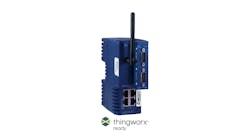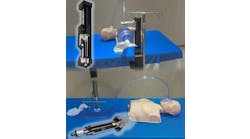A new variable frequency drive (VFD) cable released by Belden Inc., now provides economical cabling for variable-frequency applications in Canada.
Belden, a global leader in signal transmission solutions for mission-critical applications, recently released its new Canadian Standards Association (CSA) tray-rated VFD cable, an economical and robust solution for motor-to-drive connections, noise-sensitive applications requiring shielded power cable, and other solid-state power supplies with variable-frequency needs. The VFC cable also reduces the effects of common mode current containment (CMC), capacitive coupling and reflected wave voltage.
Target industries such as HVAC institutional, power generation, oil and gas, water/wastewater, alternative energy, automotive, machine building and food and beverage, benefit most from the new VFD cable because it has proven to outperform other types of cabling used for VFD. These types of cabling include unshielded cables and other constructions that are susceptible to noise emissions, high-frequency impedance or capacitance coupling.
The VFD cable reduces installation cost and labor because it does not require conduit. The TC-rated cable saves costs associated with moving equipment later because, unlike conduit, it does not need to be reinstalled. Additionally, XLPO cross-linked polyolefin insulation and a UV- and oil resistant PVC jacket provide protection and durability for harsh environments.
The cables range from 14 to 4/0 AWG and contain three-stranded BC circuit conductors with three symmetrical BC grounds and two spiral copper tape shields.
Once installed, the cables can provide several benefits such as symmetric bare grounds, which reduces the likelihood that high frequency currents will seek alternate routes back to the drive, and Shield termination directly at the drive, which reduces opportunities for noise release in the enclosure by decreasing unshielded cable exposure.
Another benefit to the cable are RW90 circuit conductors, which decrease the energy required to charge the cable and also can reduce reflected wave voltages because of their high dielectric and low capacitance.
The cable is compatible with economical connectors and cable glands from all major manufactures with application suitable ratings.
Read the full article to view the VFD cable ratings.


